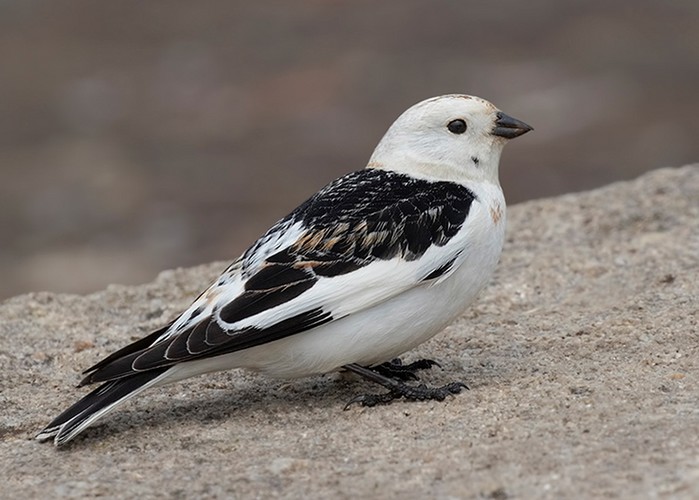Snow Buntings Keep to a 24-Hour Rhythm – Even Beneath the Midnight Sun
New research shows Arctic songbirds stick to daily activity cycles all year round, yet show striking flexibility in when they migrate.

Life in a world without night
For most birds, the rhythm of life follows the sun. But what happens when the sun never sets? A new study in the Journal of Avian Biology reveals that male Snow Buntings (Plectrophenax nivalis) living above the Arctic Circle maintain a remarkably consistent 24-hour activity rhythm across the entire year – even during the constant daylight of the polar summer. Yet when it comes to migration, these hardy birds show an unexpected flexibility, taking off and flying long distances at times that defy their usual daily pattern.
Tracking Arctic rhythms
An international team led by Nicholas Huffeldt of Lund University and the Greenland Institute of Natural Resources fitted miniature multisensor data loggers to male Snow Buntings breeding near Longyearbyen, Svalbard. Over several years, these devices recorded activity every few minutes, capturing the birds’ entire annual routines – from breeding on Arctic tundra to overwintering on the steppes of western Siberia. The results show that even under the unbroken light of the polar day, the birds maintained a strong 24-hour rhythm, alternating between active and inactive periods. The only major disruption came during spring migration, when the rhythm briefly weakened as birds embarked on their longest flights.
Defying the dark-light cycle
In most animals, daily activity patterns are closely tied to the natural light–dark cycle. But north of the Arctic Circle, the sun can remain above the horizon for months. Despite this, the study found no evidence that Snow Buntings abandon their internal clocks. “Even in continuous daylight, they still rest and feed on a roughly 24-hour schedule,” said Huffeldt. “It’s a strong sign that these birds maintain a circadian rhythm that’s deeply ingrained, probably linked to their internal calendar for breeding and migration.”
Flexible fliers
While their daily rhythm remains constant, Snow Buntings don’t always migrate according to it. Analysis of hundreds of flight bouts revealed that most shorter flights began during the birds’ active phase – the equivalent of daytime. But their longest migratory flights, often lasting over 13 hours, typically began around the transition between active and resting phases, continuing well into their inactive (nighttime) period. This means the birds can switch to flying through the night when making long-distance crossings such as the 1,000 km stretch over the Barents Sea between Svalbard and Russia.
When the rules bend
This behaviour makes the Snow Bunting an unusual example among songbirds, most of which stick to a fixed pattern of either day or night migration. “Our findings show they can adjust their migration timing flexibly, depending on conditions,” explained co-author Sissel Sjöberg. “That flexibility is probably crucial when crossing ecological barriers or taking advantage of favourable winds.” The results align with earlier accounts suggesting that Snow Buntings may migrate both by day and by night – an idea now confirmed by modern tracking data.
A rhythm with purpose
The persistence of the 24-hour cycle throughout the year may serve an important physiological role. The researchers suggest that maintaining a circadian rhythm helps the birds regulate seasonal events such as breeding, moult, and migration timing. Other Arctic songbirds like the Lapland Longspur and Willow Warbler also show similar internal rhythms, even when the external light cues are weak or absent. “Keeping time in a world without darkness may help these birds maintain their annual calendar,” said Huffeldt. “It’s a way to stay synchronised with the planet’s natural cycles.”
The edge of adaptation
The study highlights how Arctic birds balance the competing demands of internal timekeeping and environmental extremes. While the Snow Buntings’ circadian rhythm remains stable, their willingness to migrate outside it shows an adaptive flexibility that could prove vital as climate change alters wind patterns, sea-ice cover, and the length of the polar day. Future research, the authors say, should explore whether female Snow Buntings share the same patterns – and which celestial cues help these birds keep time when the sun refuses to set.
October 2025
Read the full paper here
Get Breaking Birdnews First
Get all the latest breaking bird news as it happens, download BirdAlertPRO for a 30-day free trial. No payment details required and get exclusive first-time subscriber offers.
Share this story







